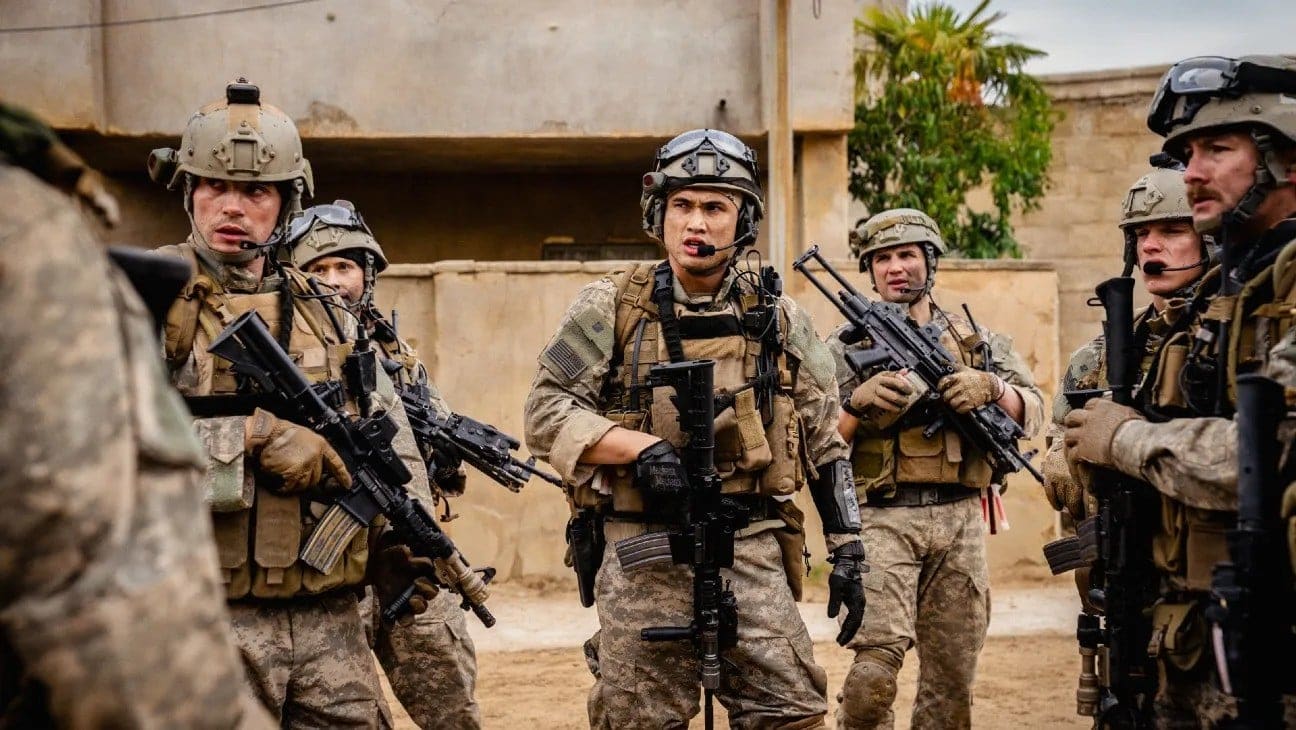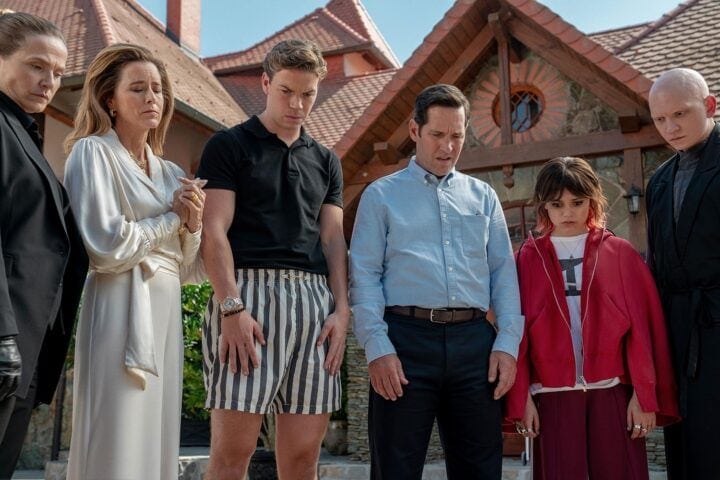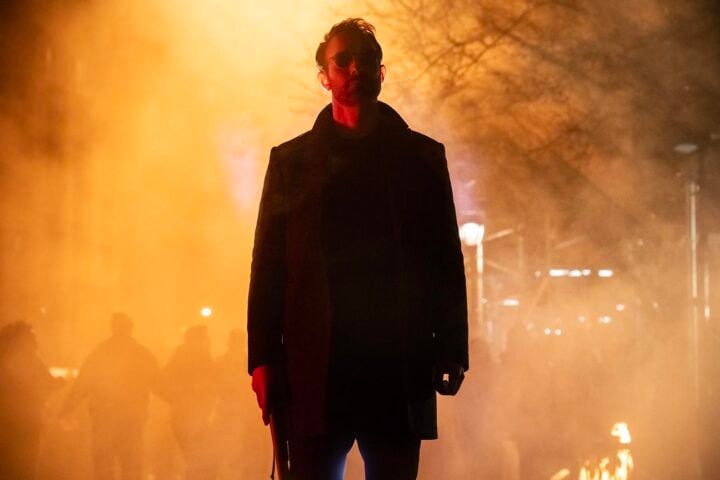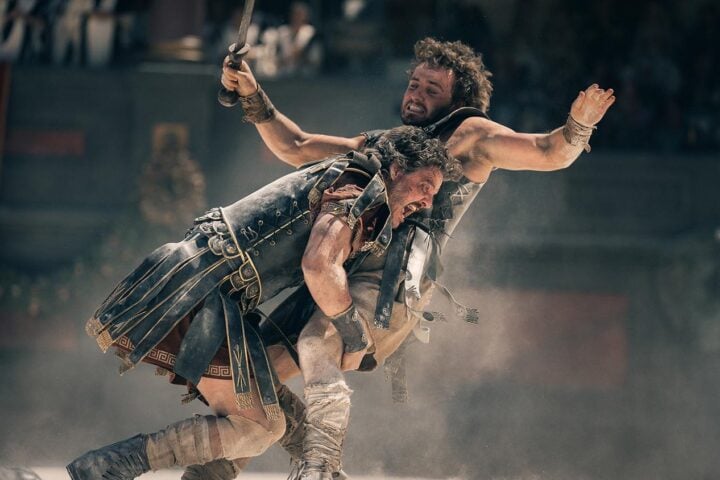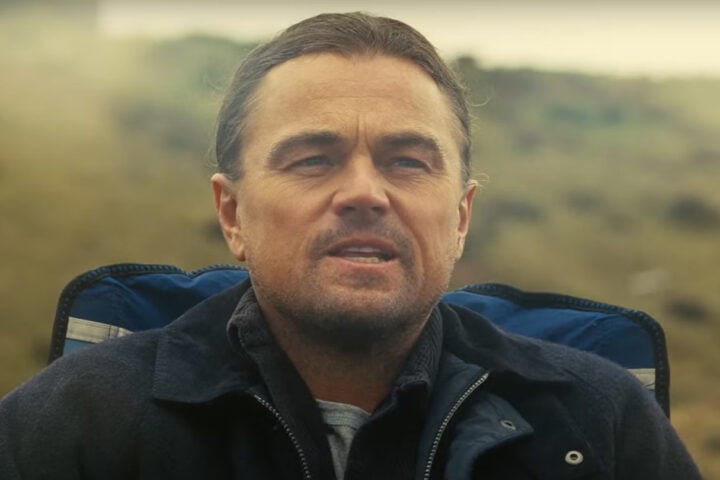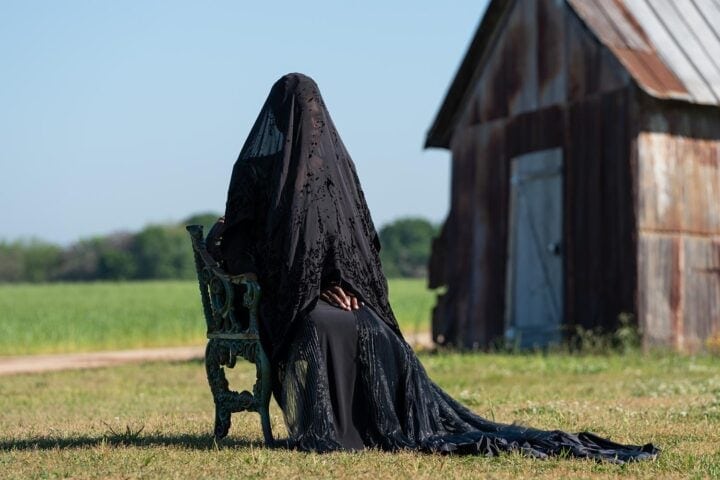There’s a scene toward the end of Ray Mendoza and Alex Garland’s Warfare in which Al Qaeda insurgents step onto a quiet street, the air thick with smoke from spent artillery and the ground littered with human remains. Where moments before an apocalyptic firefight was ensuing, now there’s only silence. It’s a recreation of a moment that we know happened, as the film tells us at the start that everything we’re watching did in fact occur in real life, but it feels wrong because of how unreal the calm is after the chaos of the past 90-ish minutes.
It’s a scene that manages to capture the unreality that combatants must experience after the battle has ended yet the smell of blood and singed flesh lingers in the air, on its way to becoming a memory in their minds. It’s in this paradoxical disconnect between what we know as reality and its filmic representation, how a movie can feel “real” yet horrific circumstances are often perceived as anything but to those living through them, that Warfare’s most compelling questions about truth, artifice, and war itself crystallize for the viewer.
Filmmakers have long wrestled with how to most responsibly portray war on screen. But in reconstructing what was a major event for members of Mendoza’s Navy SEAL team in Ramadi, Iraq, albeit a minor one in the grand scheme of a global conflict, the filmmakers strip the “war film” to its very bones. This is a formidable technical showcase and obsessive forensic recreation whose imposed formal limitations become meaning-making ends in and of themselves.
Warfare recounts an operation undertaken by Mendoza’s Navy SEAL team in November of 2006. Under cover of darkness, the group of SEALs commandeers a civilian home to surveil a residential area controlled by Al Qaeda in order to ensure the safe passage of American ground forces. But insurgents quickly become aware of where the SEALs have set up shop, and with a surprise grenade flung through a sniper hole, the team is soon fighting for their lives, attempting to stave off enemy combatants until help can arrive to get them out of dodge.
Adhering to a Dogme 95-esque code of purity, Garland and Mendoza limit themselves only to what can be confirmed from the best recollections of those that were there, based on hours of interviews with Mendoza’s former brothers in arms and others involved. This limitation extends to the young performers inhabiting the roles of the SEALS, including Kit Connor, Joseph Quinn, Will Poulter, D’Pharaoh Woon-A-Tai, and Charles Melton, all of whom give deeply felt, grounded performances despite the screenplay’s notable lack of traditional character arcs.

Warfare is leaden with jargon and wedded to procedure—fixated on giving its pack of young actors precise maneuvers to carry out and presenting war as a technical exercise with protocols to follow and operations to be completed, especially in the face of the unexpected. The film’s most effective moments occur when something routine like an evacuation is interrupted by an explosion of violence, forcing the characters to respond with contingency strategies that have been drilled into them despite the panic radiating from their faces.
This almost mechanized adherence to the praxis of armed conflict ensures that each member feels more like a component of a single unit than a person acting independently. It’s no doubt an accurate depiction of the all-for-one, one-for-all dynamic prioritized by drill instructors but also a rich thematic thread borne out of the film’s aggressive attention to detail and accuracy.
Warfare also diverges from many war stories due to its lack of traditional narrative structure. Presenting events in real time, and without building to a stirring denouement, Garland and Mendoza make the film as un-thrilling as possible, offering more downtime than direct violent engagement and turning something as small as the application of a tourniquet to a maimed leg into an interminable ordeal to be suffered through. What’s ultimately most striking about Warfare is that, though this is an experience that shaped Mendoza’s life and altered the lives of every member of his SEAL team, it’s an inconsequential event in the story of the War on Terror, and there’s a pervasive sense of purposelessness to what we watch unfold.
Warfare is sure to frustrate those who found Civil War overly neutral in its political stance as it further pares away any notion of didacticism in the name of raw experience. Yet this doubling down creates messaging on its own. It’s notable that the film is called Warfare, rather than simply War, with the suffix pointing to action taken in the waging of war. It also creates a mental signpost to the rehearsed nature of what Garland and Mendoza do here, with their strapping band of up-and-coming actors playacting soldiers and the exacting details of their artisan-built Ramadi streets conveniently transposed to a shooting location in England.
Though the illusion is convincing, the film’s coda, in which the actors are shown side by side with their real-life counterparts (many of the faces notably blurred) and we witness set visits from some of the vets feels like it takes a pin to the grim fantasy of what we just went through. But it may also, in its way, be asking us to consider the futility of the enterprise in the first place.
Can even the most convincing recreation bring us even one breath closer to understanding what these men experienced? Is committing it to film a testament to their bravery or just an ugly reenactment of their abuse by the military-industrial complex, and is there any difference between the two? The formal experimentation of Warfare is built to pose questions, not answer them, but its silence rings louder than any anti-war speechifying ever could.
Since 2001, we've brought you uncompromising, candid takes on the world of film, music, television, video games, theater, and more. Independently owned and operated publications like Slant have been hit hard in recent years, but we’re committed to keeping our content free and accessible—meaning no paywalls or fees.
If you like what we do, please consider subscribing to our Patreon or making a donation.
